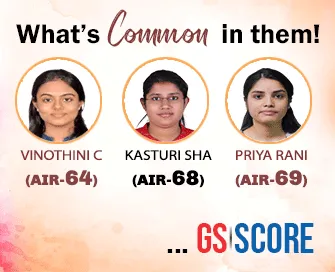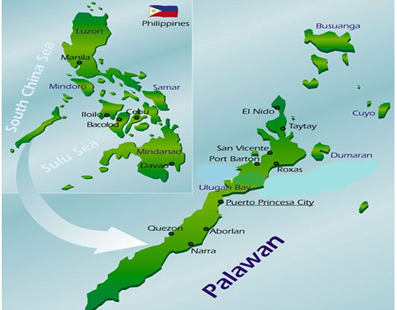

17th July 2025 (14 Topics)
Mains Issues
Context:
Recent incidents across Indian states—ranging from Odisha and Bengal to Karnataka and Delhi—have highlighted a disturbing rise in cases of sexual harassment and violence against women, particularly within supposedly secure environments such as educational institutions and workplaces.
Alarming Surge in Gender-Based Violence
Recent Cases:
- A 20-year-old B.Ed student in Odisha immolated herself outside her college principal’s office after repeated sexual harassment complaints were ignored.
- A law college student was gang-raped on campus in West Bengal (June 2025).
- In Mangaluru, lecturers were arrested for alleged sexual assault of a student.
- In Delhi, the rape and murder of a 9-year-old girl led to political outrage over administrative failure.
Legal and Institutional Framework: On Paper vs Practice
- Relevant Law:
- Sexual Harassment of Women at Workplace (Prevention, Prohibition and Redressal) Act, 2013 mandates the formation of Internal Complaints Committees (ICCs) in all institutions.
- Gaps in Implementation:
- The Odisha government issued directives to form ICCs only after the incident, revealing negligence in compliance.
- The lack of timely response from institutions and authorities, including escalation to the Chief Minister’s Office, indicates bureaucratic apathy.
Statistical Snapshot of Gender Crimes
- Data from NCRB (2022):
- Total crimes against women: 4,45,256 (increase of 4% over 2021).
- Cruelty by husband/relatives: 31.4%
- Assault with intent to outrage modesty: 18.7%
- Rape: 7.1%
Structural and Cultural Barriers
- Barriers to Reporting:
- Fear of retaliation, victim-blaming, and social stigma.
- Lack of sensitization among institutional heads and authorities.
- Failure of Preventive Institutions:
- ICCs either non-existent or non-functional in several colleges/universities.
- Lack of accountability mechanisms within educational and administrative hierarchies.
Societal Desensitization and Media Cycles
- Short-lived Public Outrage:
- Media and public attention often fade within days, weakening long-term advocacy and systemic
- Cultural Normalization of Misogyny:
- Patriarchal norms and gender-based power dynamics continue to shape institutional responses and public discourse.
Way Forward
- Systemic Overhaul of Redressal Mechanisms
- Ensure strict compliance with the 2013 POSH Act through third-party audits and mandatory reporting.
- Penalise institutions failing to establish or maintain functional ICCs.
- Institutional Accountability and Training
- Regular gender-sensitization programs for teachers, administrative staff, and law enforcement agencies.
- Integration of grievance redressal modules in teacher training programs (especially B.Ed curriculums).
- Strengthening Legal and Judicial Response
- Establish fast-track courts for campus-based gender crimes.
- Monitor police response time and FIR registration timelines using digital dashboards.
- Cultural and Educational Transformation
- Integrate comprehensive sex education and gender sensitivity into school and college syllabi.
- Promote youth-led awareness campaigns on campuses to counteract rape culture and encourage active bystander intervention.
- Reliable Data and Transparency
- Release NCRB data in a timely manner to inform policy.
- Enable anonymous online complaint systems at institutions for safer reporting.


Mains Issues
Context:
Recent strategic commentaries have reignited debates on the possibility of a “reinforced one-front war” involving coordinated Chinese and Pakistani military action against India, demanding a re-evaluation of India’s strategic preparedness and diplomatic options.
Examining the Strategic Realities Behind the China-Pakistan Security Convergence
Nature of the China-Pakistan Defence Partnership
- Arms Transfers and Military Assistance: China remains Pakistan’s principal arms supplier, offering advanced weaponry, drones, missile systems, satellite navigation (BeiDou), and naval assets. This enhances Pakistan’s military capabilities despite its economic vulnerabilities.
- Diplomatic Shielding: Beijing consistently provides diplomatic cover to Pakistan in multilateral fora, including blocking UN sanctions and muting international responses during India-Pakistan crises.
- Limited Operational Integration: Despite extensive collaboration, there is no evidence of shared war planning, joint command structures, or combined-force doctrines akin to alliances such as NATO or the U.S.–South Korea alliance.
Overstatement of the “Reinforced One-Front War” Thesis
- Misreading Strategic Intentions:Labeling the China-Pakistan axis as a unified war front misreads Beijing’s calibrated intentions, which focus more on containment than direct conflict with India.
- Absence of Joint Operational Commitments: China has never formally committed to joining Pakistan in a full-scale military confrontation with India. Joint military exercises are limited in scale and symbolism.
- Differing Threat Perceptions: For Pakistan, India is an existential adversary. For China, India is a regional competitor, not a direct enemy. Beijing prioritizes its strategic rivalry with the United States over direct military engagement with India.
Strategic Implications and Policy Recommendations for India
- Risk of Strategic Miscalculation: Overemphasis on a unified front may lead to inflated military expenditure, rigid worst-case doctrinal postures, and reduced diplomatic maneuverability.
- Need for Strategic Clarity: India must differentiate between structural defence cooperation and full-spectrum military alignment. Recognizing this nuance is essential for rational threat assessment.
- Balanced Policy Approach: While preparing for collusive threats, India must simultaneously pursue calibrated diplomatic engagement with China to preserve crisis stability and reduce escalation risks.
Way Forward:
- Enhance Joint Intelligence Assessment: Institutional mechanisms should be developed to monitor real-time developments in China-Pakistan military coordination, focusing on early indicators of operational integration.
- Diversify Strategic Partnerships: Strengthening defence and technological ties with the U.S., France, and other Quad nations will help counterbalance China’s regional influence.
- Pursue Diplomatic Levers: India should proactively utilize multilateral platforms (e.g., SCO, BRICS) to prevent Beijing’s unqualified support to Pakistan, particularly in security-related domains.


Prelims Articles
Context:
NPCI International Payments Ltd. (NIPL) has expanded the UPI–PayNow real-time payment linkage by adding 13 more banks to enhance cross-border remittances between India and Singapore. Concurrently, the Ministry of Commerce has intensified trade surveillance and initiated anti-dumping investigations to curb unfair trade practices.
UPI–PayNow Linkage Expansion:
- The Unified Payments Interface (UPI) and PayNow real-time payment linkage was initially launched in February 2023 between India and Singapore.
- As of July 17, 2025, NIPL has added 13 additional Indian banks to the UPI–PayNow platform, increasing the total number of Indian participating banks to 19.
- Users in Singapore can now send remittances to Indian recipients via apps such as BHIM, Google Pay, PhonePe, and other UPI-enabled banking apps.
- This move is expected to significantly enhance financial inclusivity, reduce transaction costs, and promote formal cross-border money transfers between the two countries.
- The development aligns with India’s broader Digital Public Infrastructure (DPI) and Fintech diplomacy
Anti-Dumping and Import Surveillance:
- The Directorate General of Trade Remedies (DGTR), under the Ministry of Commerce, initiated eight anti-dumping investigations in June 2025 targeting imports from 12 countries including China, Taiwan, Malaysia, and EU nations.
- The investigations focus on commodities such as industrial chemicals, types of paperboards, and glass wool that are allegedly being dumped below normal value, harming domestic industries.
- The Directorate General of Foreign Trade (DGFT) has also imposed restrictions on the import of precious metal alloys to curb the misuse of gold import norms.
- A coordinated inter-ministerial approach has been adopted for monitoring import surges and ensuring trade remedy measures are timely applied.
- These steps are grounded in the WTO framework that allows anti-dumping duties when domestic industries suffer material injury due to unfair pricing by foreign exporters.


Prelims Articles
Context:
The Union Cabinet has approved the Prime Minister Dhan-DhaanyaKrishiYojana (PM-DDKY), a six-year scheme (2025–31) aimed at boosting agriculture and allied sectors in 100 low-performing districts identified by key indicators.
PM Dhan-DhaanyaKrishiYojana
Launch Year & Duration:
- The PM Dhan-DhaanyaKrishiYojana will commence in the financial year 2025–26 and will continue for six years.
Objective:
- The scheme seeks to accelerate agricultural development by addressing critical gaps in productivity, cropping intensity, and credit disbursement through a district-specific, convergence-based strategy.
Coverage & Selection Criteria:
- 100 districts will be selected.
- Selection will be based on three objective indicators:
- Low agricultural productivity
- Low cropping intensity
- Low credit disbursement
- Selection will be proportional to each State/UT’s Net Cropped Area and operational holdings, with at least one district per state.
Key Components of the Scheme:
- Focus areas: crop diversification, sustainable practices, post-harvest infrastructure, irrigation improvement, credit facilitation.
- Implementation through convergence of 36 existing Central schemes from 11 Ministries/Departments, along with state schemes and private sector participation.
Institutional Mechanism:
- Multi-level committees at District, State, and National levels.
- District DhanDhaanyaSamiti will finalize the District Agriculture and Allied Activities Plan, with the involvement of progressive farmers.
- NITI Aayog will provide guidance and undertake performance reviews.
Monitoring & Evaluation:
- A dedicated dashboard will track 117 Key Performance Indicators (KPIs) on a monthly basis.
- Central Nodal Officers will be assigned to individual districts for consistent monitoring.
Alignment with National Goals:
- Supports goals of Atmanirbhar Bharat, natural/organic farming, soil and water conservation, and value addition in agriculture.


Prelims Articles
Context:
The Union Agriculture Minister addressed ICAR's 97th Foundation Day, emphasizing record agricultural growth, launching the ViksitKrishiSankalpAbhiyan, and outlining future research priorities for farmer-centric innovation.
Indian Council of Agricultural Research (ICAR)
Establishment and Legal Framework
- The Indian Council of Agricultural Research (ICAR) was established on 16 July 1929.
- It was formerly known as the Imperial Council of Agricultural Research.
- It was established as a registered society under the Societies Registration Act, 1860.
- The establishment was in pursuance of the recommendations of the Royal Commission on Agriculture (1928).
Administrative Jurisdiction
- ICAR functions as an autonomous organisation under the Department of Agricultural Research and Education (DARE).
- DARE is part of the Ministry of Agriculture and Farmers Welfare, Government of India.
Headquarters: The headquarters of ICAR is located in New Delhi.
Mandate and Functions
- ICAR is the apex national body responsible for:
- Coordinating agricultural research and education.
- Guiding and managing scientific activities in: Agriculture, Horticulture, Animal Sciences, Fisheries etc.
- It plays a central role in formulating and implementing the National Agricultural Research System (NARS).


Prelims Articles
Context:
India has achieved 50% of its installed electricity capacity from non-fossil fuel sources—five years ahead of its Nationally Determined Contributions (NDCs) target under the Paris Agreement.
Installed Capacity vs Actual Generation:
- As of June 30, 2025, non-fossil fuel sources comprise 50% of India's total installed electricity capacity (~484 GW).
- However, actual electricity generated from clean sources remains under 30%, owing to lower capacity utilisation factors (CUFs).
Components of Non-Fossil Fuel Sources:
- Include solar, wind, biomass, hydropower (small and large), and nuclear power.
- Solar CUF: ~20%, Wind CUF: ~25–30%, Coal CUF: ~60%, Nuclear CUF: ~80%.
Grid Limitations & Storage Challenges:
- Clean energy utilisation is hampered by lack of grid flexibility and inadequate battery storage.
- Power from coal still meets ~75% of base load demand, especially during non-solar hours (evenings).
Policy Solutions & Way Forward:
- Adoption of hybrid renewable energy systems (solar + wind + hydro + battery storage).
- Introduction of time-differentiated tariffs and smart grid technology to enhance clean energy integration.


Prelims Articles
Context:
A new report by the Centre for Science and Environment (CSE) flagged that ground-level ozone (O?) levels exceeded permissible limits on over one-third of summer days in major Indian cities during March–May 2025.
Ozone (O?) Pollution Classification:
- Ground-level ozone is a secondary pollutant, formed via photochemical reactions between nitrogen oxides (NO?) and volatile organic compounds (VOCs) in the presence of sunlight.
Monitoring Methodology:
- The CSE study utilized data from 80 continuous ambient air quality monitoring stations across Delhi, Mumbai, Kolkata, Bengaluru, Chennai, and Hyderabad.
Notably, 8-hour average concentrations were assessed (as per National Ambient Air Quality Standards – NAAQS).
City-wise Observations (March–May 2025):
- Delhi: O? levels breached norms on each summer day between March 1 and May 31.
- Bengaluru: 45 out of 92 summer days (29% increase from 2024).
- Mumbai: 32 out of 92 days (42% increase from 2024).
- Kolkata: 22 out of 92 days.
Scientific Concern:
- Ozone, being highly reactive, adversely impacts respiratory health even with short-term exposure. Unlike primary pollutants, its levels rise under intense solar radiation and high ambient temperatures — making summer months critical.
Regional Contrast:
- Northern and central Indian cities (warmer zones) recorded consistent breaches; meanwhile, cities in temperate/wet zones (like Chennai or coastal areas) showed fewer exceedances due to meteorological variation.
Health Impact & Standards:
- The NAAQS sets an 8-hour average safe ozone level at 100 µg/m³. Repeated exposure above this threshold is linked to respiratory distress, aggravated asthma, reduced lung function, and increased hospital admissions.


Prelims Articles
Context:
India has formally submitted a request to the United States for the co-production of Javelin anti-tank guided missiles (ATGMs) under the “Make in India” initiative, aiming to enhance indigenous defence capabilities and reduce dependency on foreign suppliers.
About Javelin ATGM:
- Javelin is a third-generation fire-and-forget anti-tank guided missile.
- It is jointly developed by Raytheon and Lockheed Martin in the United States.
- It uses infrared imaging for guidance and has a top-attack capability, making it highly effective against modern tanks.
Strategic Importance for India:
- Enhancing India's anti-tank warfare capabilities is critical, particularly in light of threats posed by China and Pakistan.
- The missile's lightweight and portable design suits Indian Army operations in difficult terrains like the Himalayas.
- It supports the government's ‘Make in India’ initiative and strengthens defence indigenisation.


Prelims Articles
Context:
India has formally submitted a request to the United States for the co-production of Javelin anti-tank guided missiles (ATGMs) under the “Make in India” initiative, aiming to enhance indigenous defence capabilities and reduce dependency on foreign suppliers.
About Javelin ATGM:
- Javelin is a third-generation fire-and-forget anti-tank guided missile.
- It is jointly developed by Raytheon and Lockheed Martin in the United States.
- It uses infrared imaging for guidance and has a top-attack capability, making it highly effective against modern tanks.
Strategic Importance for India:
- Enhancing India's anti-tank warfare capabilities is critical, particularly in light of threats posed by China and Pakistan.
- The missile's lightweight and portable design suits Indian Army operations in difficult terrains like the Himalayas.
- It supports the government's ‘Make in India’ initiative and strengthens defence indigenisation.


Prelims Articles
Context:
The recent report by UN Special Rapporteur Francesca Albanese has accused Israel of committing genocide in Gaza, reigniting global debate on the definition, legal thresholds, and enforcement mechanisms of genocide under international law.
Origin and Legal Codification of the Term ‘Genocide’
- Coined by Raphael Lemkin in 1944 in Axis Rule in Occupied Europe.
- Derived from Greek word genos (race or tribe) and Latincide (killing).
- Coined in response to the Armenian genocide (1915–17) and later reinforced by the Holocaust during World War II.
Legal Definition under the Genocide Convention (1948)
- Adopted by the United Nations General Assembly on 9 December 1948.
- Contains two essential elements:
- Mental element: Intent to destroy, in whole or in part, a national, ethnical, racial, or religious group.
- Physical element: Any of the following five acts:
- Killing members of the group.
- Causing serious bodily or mental harm.
- Inflicting conditions of life calculated to destroy the group.
- Imposing measures to prevent births.
- Forcibly transferring children to another group.
Key International Instruments
- 1948 Convention on the Prevention and Punishment of the Crime of Genocide:
- Binding treaty obligating states to prevent and punish genocide.
- Rome Statute of the International Criminal Court (ICC), 2002:
- Grants ICC jurisdiction over genocide, war crimes, and crimes against humanity.


Prelims Articles
Context:
The United States announced the construction of two naval repair and maintenance facilities in western Palawan province of the Philippines, strategically located near the contested South China Sea.
Oyster Bay, Palawan:
- Location: Northeastern coast of Palawan Island, facing the West Philippine Sea (part of the South China Sea).

- Strategic Significance:
- Lies near key maritime flashpoints like Spratly Islands.
- It is the location of an existing Philippine naval base under development for expanded naval operations.
- Chosen by the S. Navy for building repair and maintenance facilities for Philippine military boats.
- Military Utility:
- Ideal for rapid deployment of patrol and surveillance vessels.
- Supports Western Command (WESCOM) of the Philippine military.
- Geopolitical Context:
- Close to contested zones where China, Vietnam, Philippines, and others have maritime claims.
- The bay enhances S.-Philippine interoperability under EDCA (Enhanced Defense Cooperation Agreement).
Quezon Town, Palawan:
- Location: Southwestern coast of Palawan province, ~130 km south of Puerto Princesa (provincial capital).
- Administrative Category: A municipality in Palawan with coastal access to the West Philippine Sea.
- Economic Base: Predominantly agriculture, fishing, and eco-tourism.
- Strategic Relevance:
- Selected for U.S. military infrastructure support due to proximity to disputed waters.
- Positioned to support maritime surveillance and naval logistics in the South China Sea.
- Infrastructure Development:
- Part of broader S.-Philippines security cooperation, boosting local infrastructure and defence readiness.


Editorials
Context:
On July 10, 2025, a 4.4 magnitude earthquake struck near Delhi, exposing the fragile seismic preparedness of the National Capital Region and reigniting concerns over India's broader earthquake resilience.
India’s Seismic Exposure and Urban Fragility
- Tectonic Setting and High-Risk Zones:India lies on an active tectonic boundary where the Indian Plate collides with the Eurasian Plate, rendering the Himalayas and adjoining regions highly susceptible to seismic events, including potential “Great Himalayan Earthquakes” (Magnitude 8+).
- Delhi’s High-Risk Profile:The capital city falls within Seismic Zone IV, with over 80% of buildings non-compliant with IS 1893:2016 norms, endangering its 33.5 million residents and more than 5,000 high-rises.
- Precedents of Catastrophic Earthquakes:Past disasters such as the 2001 Bhuj (M 7.7) and 2015 Nepal quake (M 7.8) highlight the lethal impact of unpreparedness and reinforce the urgent need for resilient infrastructure.
Regional Patterns and Structural Deficiencies
- Recurring Seismic Events Across Asia:The 2025 quakes in Myanmar (M 7.7), Tibet (M 5.7), and Greece (M 6.2) reflect a pattern of global tectonic unrest, with India’s northeast and Himalayan belt consistently affected.
- Urbanisation and Enforcement Gaps:Rapid expansion in Delhi, particularly in East Delhi’s liquefaction-prone zones, and poor compliance with seismic safety norms compound the risk posed by moderate or strong tremors.
- Neglect of Seismic Codes Nationwide:Critical cities such as Guwahati, Bhuj, and Port Blair continue to face significant hazards due to non-adherence to IS 1893 standards, lack of retrofitting, and weak institutional enforcement mechanisms.
Pathways for Seismic Resilience
- Retrofitting and Engineering Solutions:Mandating ductile detailing, deep pile foundations, and retrofitting of vulnerable structures with steel jacketing are essential to mitigate seismic impact in high-risk areas.
- Strengthening Institutional Mechanisms:Authorities like the Delhi Development Authority and National Center for Seismology must expedite building audits, expand early warning systems, and implement disaster response training, especially in rural Seismic Zone V regions.
- Learning from Global Practices:Countries like Thailand (Bangkok) and Japan have adopted material innovations, strict enforcement, and public preparedness campaigns that India must emulate, while tailoring interventions to its unique seismic geography.
Practice Question:
Considering India’s tectonic vulnerabilities and urban expansion, critically examine the effectiveness of the country’s existing seismic safety frameworks. Suggest structural and administrative measures needed to enhance earthquake resilience in high-risk zones. (250 words)


Editorials
Context:
The Election Commission of India (ECI) initiated a Special Intensive Revision (SIR) of electoral rolls in Bihar ahead of upcoming state elections, raising widespread concerns about arbitrary exclusions and procedural opacity.
Legal Framework and Constitutional Mandate
- Electoral Authority under Article 324:The ECI is constitutionally empowered under Article 324 to supervise and control electoral roll preparation; however, this authority must align with constitutional guarantees of fairness and equality.
- Right to Vote and Adult Suffrage:Article 326 mandates universal adult suffrage for all Indian citizens aged 18 and above; arbitrary disenfranchisement undermines this principle and contradicts the inclusive ethos of electoral democracy.
- Statutory Provisions under RPA, 1950:The Representation of the People Act, 1950 allows the ECI to conduct special revisions, but such actions must remain proportionate, non-discriminatory, and within the boundaries of due process.
Procedural Irregularities and Exclusion Criteria
- Omission of Widely Held Documents:The ECI's June 24 notification lists 11 acceptable ID proofs but excludes Aadhaar, EPIC, and ration cards, causing confusion and imposing unreasonable burdens on citizens.
- Arbitrary Classification of Voters:A distinction between voters enrolled in 2003 and those added later has been made without justification, requiring re-verification of the latter group’s eligibility without credible reasoning.
- Lack of Transparency and Due Notice:The hasty timeline—with draft rolls scheduled for August 1—fails to provide sufficient opportunity for public participation, particularly disadvantaging the poor and marginalized.
Judicial Scrutiny and Democratic Implications
- Supreme Court's Initial Response: SC urged the ECI to consider including Aadhaar, EPIC, and ration cards as valid documents but fell short of issuing interim relief or binding directions.
- Democratic Legitimacy and Voter Inclusion:Electoral legitimacy depends not merely on free outcomes but on inclusive, participatory processes that respect equality and minimize procedural hurdles.
- Historical Perspective on Electoral Inclusivity:As historian OrnitShani notes, India’s electoral roll was originally conceived to include all eligible persons, not exclude the undocumented—this democratic presumption now faces erosion.
Practice Question:
In the context of the recent Special Electoral Roll Revision in Bihar, critically examine the balance between the Election Commission’s constitutional mandate and the need to uphold the principles of procedural fairness, non-discrimination, and universal adult suffrage. (250 words)


Editorials
Context:
The recent strategic initiatives undertaken by the Union Cabinet, coupled with evolving regional dynamics, have reignited critical discourse on the foundational philosophy and geopolitical orientation of India’s foreign policy, particularly within the South Asian context and its broader global engagements.
Philosophical and Diplomatic Limitations
- Hyper-nationalism over Strategy: India’s foreign policy is increasingly driven by emotive hyper-nationalism, which impairs rational, objective analysis and undermines the ability to confront complex geopolitical realities.
- Refusal of Realism: The foreign policy establishment exhibits a refusal to acknowledge its own strategic predicament, instead preferring superficial triumphalism over candid engagement with difficult international situations.
- Moral Exceptionalism: India’s tendency to adopt moralistic postures—such as vague condemnations of terrorism or violence without naming aggressors—undermines its credibility and is seen as a deflection from substantive diplomacy.
Strategic Blind Spots and Regional Contradictions
- Nuclear Dialogue Vacuum: Despite growing nuclear anxieties in South Asia, especially between India and Pakistan, India's diplomatic efforts have failed to establish robust channels for escalation control or crisis management.
- Failure in Narrative Control: India’s inability to shape the regional narrative, especially post events like Operation Ganga or Balakot, results in both strategic isolation and a credibility gap vis-à-vis Pakistan and China.
- Pakistan and the Global Lens: Even when Pakistan is diplomatically isolated, India fails to translate this into global strategic advantage, largely due to inconsistent messaging and lack of cohesive follow-up action.
Global Standing and Structural Concerns
- Diplomatic Deficit at the MEA: Political control over diplomacy and weakening of professional diplomatic corps has resulted in poor strategic coherence, especially in crisis situations such as the Ukraine war or the Israel-Gaza conflict.
- Weak Global Strategy: India’s approach to multilateralism and global order is marked by a tension between ambition and capacity, with rhetorical assertions often unsupported by institutional or diplomatic strength.
- Soft Power without Substance: Grand slogans like “Vishwa Guru” are not backed by global leadership on pressing issues (climate, peace, regional integration), making India's foreign policy less persuasive to the world order.
Practice Question:
Critically examine the assertion that India’s foreign policy is marked by a refusal of strategic realism. In your view, how can India reconcile its aspirational global role with the challenges of regional and global diplomacy? (250 words)




